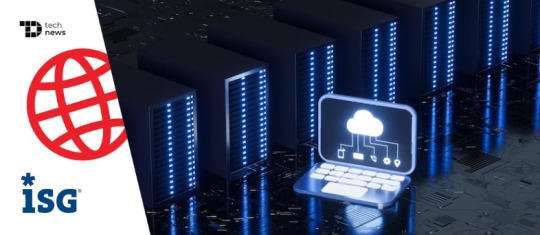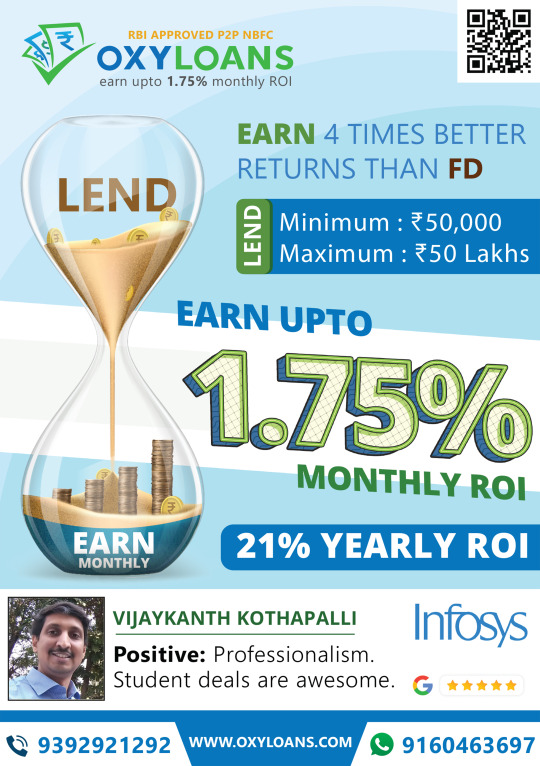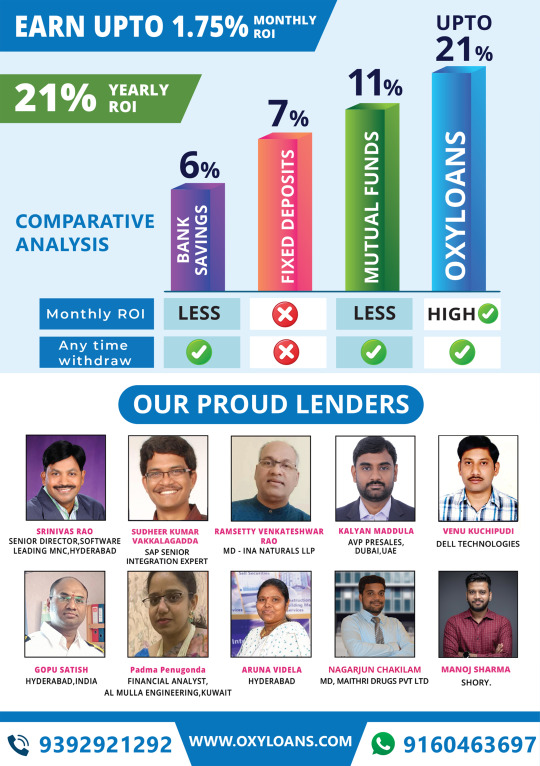#Capgemini
Explore tagged Tumblr posts
Text
Matthew Bernardini, CEO and Co-Founder of Zenapse – Interview Series
New Post has been published on https://thedigitalinsider.com/matthew-bernardini-ceo-and-co-founder-of-zenapse-interview-series/
Matthew Bernardini, CEO and Co-Founder of Zenapse – Interview Series


Matthew Bernardini is the CEO and Co-Founder of Zenapse, where he leads the company’s vision and oversees the development of its proprietary AI foundation model into category-leading products. With a background as a product marketer, data strategist, and technologist, he brings a blend of entrepreneurial experience—having achieved four successful exits—and corporate expertise from organizations such as JPMorgan Chase, Omnicom, and Capgemini.
Throughout his career, Bernardini has maintained a strong interest in artificial intelligence, psychology, consumer behavior, game theory, and statistics, which continue to inform his leadership at Zenapse.
Zenapse is an AI-driven platform that boosts customer acquisition, engagement, and retention through emotionally intelligent experiences. Powered by the world’s first Large Emotion Model (LEM), Zenapse uses psychographic insights and goal-based optimization to help brands connect more deeply with audiences. Fast to deploy and easy to use, it delivers measurable results in hours—not weeks—while reducing costs and increasing ROI.
Zenapse is built around the intersection of emotional intelligence and AI. What was the ‘aha’ moment that led to the creation of the Large Emotion Model (LEM)?
Zenapse has a veteran founding team with backgrounds in the product development, advertising, marketing, and customer experience spaces, with more than 100 years of combined experience at companies like Capgemini, Omnicom, and JP Morgan Chase. Over our careers, we’ve seen a new paradigm shift emerge for marketers, where AI has changed how we think about and engage with consumers.
In today’s fast-paced digital landscape, customers expect personalized and resonant experiences across all touchpoints, but traditional marketing solutions lack the speed and insights needed for real-time decision-making and struggle to meet these expectations. Simultaneously, from product decisions to advertising campaigns, leaders struggle with the high cost of hiring multiple team members to complete this work.
To address this need, we’ve built the world’s first Large Emotion Model (LEM), which helps marketers increase revenue and sales by bringing emotional intelligence into their consumers’ experience. By orienting their communication towards what is of value and interest to consumers, rather than a single “brand-first” message, brands can create more meaningful interactions that lead to higher engagement, sales, retention, and customer acquisition.
How do you define a Large Emotion Model (LEM), and how does it differ technically and functionally from a traditional Large Language Model (LLM)?
Our Large Emotion Model (LEM) is a predictive AI engine powered by a dataset built on knowledge of more than 200 million consumers with 6 billion datapoints. Through AI-driven psychographic insights (i.e., beliefs, sentiments, and emotions), companies can understand what motivates their customers to convert – whether that’s the features or benefits of a product, special promotions and incentives, imagery or calls to action, then allowing them to prioritize the brand experience content to a consumer’s preference.
In contrast to our LEM, which focuses on emotion and behavior, large language models (LLMs) focus on text and functions related to natural language processing (NLP) without deeper insights into what different segments of audiences believe and value.
We’ve worked closely with Google, through their Google Startup and Google Cloud Marketplace programs, as well as Comcast Lift Labs, to ensure that our solution is enterprise-ready and meets the needs of the world’s most demanding marketers.
Why do you believe emotional intelligence is the “missing link” in most marketing AI platforms today?
The simple answer is that marketers have not been able to truly understand their customers because existing legacy technology focuses on demographics and behavior. We seamlessly integrate with tools from companies such as Adobe, Salesforce, and Google to deliver extraordinary results.
95% of consumer decisions are subconscious and driven by emotion. Yet, for decades, brands have used demographic (e.g., zip code, race, income) and behavioral data to inform marketing campaigns. While this type of data has its uses, most purchase decisions are driven by emotions, which these data points fail to capture. As a result, marketers struggle with limited accuracy and effectiveness, often resorting to generalized solutions.
Now, through our LEM, brands can tap into psychographic insights to build this full picture and increase sales and revenue. The proof of concept for emotional intelligence’s role in marketing lies in the numbers: we’re helping household-name brands increase conversion rates by 40-400% and engagement upwards of 80%.
What are the most common misconceptions you see around AI’s role in understanding human emotion?
One of the biggest misconceptions is that AI is here to replace marketers. At Zenapse, we’re taking a different approach – we’re helping marketers develop marketing and advertising with emotional intelligence and AI that helps them diversify their perspectives through the ability to connect and understand their customers on a deeper, more emotional level.
Traditional campaigns have often relied on lumping consumers into broad categories defined by demographics, like age, income, and zip code, which ignores the nuances of what humans truly care about. With our LEM, marketers can align campaigns around what matters most to each person.
Instead of guessing what might resonate, our platform helps marketers confidently create experiences that truly resonate because it’s built on a foundation of emotional intelligence. That’s not replacing the human touch – it’s making it stronger.
In your view, what separates hype from true innovation in the AI + EQ space right now?
We’re entering a new era of marketing that’s defined by emotionally intelligent experiences, not surface-level personalization.
Consumer behavior has changed dramatically. The majority of consumers now prefer personalized experiences – they expect brands to know what they care about. This presents an opportunity for brands to leverage AI in a way that creates deeper connections with their consumers.
The difference between hype and true innovation is the quality of data. Our LEM is built on knowledge of 300 million consumers and six billion real-time data points, which gives brands a comprehensive understanding of who their consumers are – something they couldn’t have done before now.
What types of psychographic signals and real-time data power the LEM, and how are these modeled into the Data Lake?
The psychographics behind our LEM are based on four pillars:
Beliefs – we group beliefs into individual categories, including how they value things like money, knowledge, family, and belonging, among others
Emotions – think about how you react after seeing an ad or promotion. Does it bring you joy or make you anxious?
Activities – from gardening to gaming, we account for all different types of real-world and digital activities
Behaviors – the events and actions a consumer performs in a company’s experiences, such as completing a form, watching a video, or making a purchase.
Consumers make buying decisions with their hearts as much as with their minds, so we know that addressing the emotional component is the key to unlocking real value across the entire customer lifecycle.
LEM is described as leveraging 6+ billion data points across 300M+ consumers. What safeguards and ethical considerations are in place to ensure privacy and transparency?
Privacy is the center of our product development. Our entire technology ecosystem is SOC2 compliant, and our dataset does not capture or retain any consumer personally identifiable information (PII). Our data is aggregated and anonymized. We also maintain clear internal policies and governance practices to ensure ethical use of AI in every step of development.
Can you walk us through the role of ZenCore, ZenInsight, and ZenVision in powering emotionally intelligent customer experiences?
ZenCore is our proprietary consumer psychographic model and the engine that powers our LEM. ZenInsight is the data foundation of emotionally intelligent experiences. ZenVision, in real time, translates these insights into predictions on which messaging or content will resonate with a given psychographic segment and provides actionable recommendations for marketers. Together, these tools form a full-stack solution for marketing with emotional intelligence.
How does Zenapse adapt emotional predictions across verticals like retail, telecom, and healthcare? Are there any surprising industry use cases?
We’re already working with companies like Comcast, Sam’s Club, Aeropostale, Bread Financial, Bayada Education and Action Karate to improve conversion rates of digital brand experiences by 40-400%. While the emotional drivers vary by vertical, the framework remains consistent: we decipher what matters to a given consumer and help brands align their experiences accordingly.
What’s your long-term vision for LEM—do you see it evolving beyond marketing into other domains like healthcare or education?
Right now, we’re focused on using AI to help marketers and advertisers better relate to their customers, and as our data continues to get better over time, so too will our LEM. We have recently extended the platform beyond websites to support CTV through our partnership with LG Ad Solutions and their innovation lab. Our goal is to extend our platform key consumer touchpoints by 2028 – video games, automobiles and connected homes to name a few.
How do you see emotionally intelligent AI reshaping the next decade of digital experiences?
The ability to deliver real-time, hyper-personalized experiences across all digital platforms is already more powerful than ever, creating new opportunities for partnerships. AI and emotional intelligence will continue to be adopted, and as these technologies and insights become increasingly sophisticated, they will be the driving force behind marketing efforts across all digital media.
Our team is working hard to stay ahead of this curve. We recently announced our partnership with LG Ad Solutions’ Innovation Labs to help CTV advertisers deliver emotionally intelligent experiences across LG’s ecosystem of 200 million smart TVs, and we’re working to bring our insights to other screens, like web, mobile, AVs, music, movies, connected cars, and more
We see the future of digital experiences being shaped by AI and emotional intelligence. Businesses that fail to adapt to this shift risk being left behind by competitors who are quicker to respond to the changes in consumer preferences and behaviors.
Thank you for the great interview, readers who wish to learn more should visit Zenapse.
#acquisition#adobe#advertising#ai#AI platforms#approach#artificial#Artificial Intelligence#Automobiles#background#Behavior#behavioral data#billion#brands#bread#Capgemini#Capture#career#Careers#Cars#CEO#Cloud#code#comcast#communication#Companies#comprehensive#Connected cars#consumer behavior#consumers
0 notes
Text
The Role of Semiconductor Engineering Services Acquisitions (2018-2024) in Enabling 5G and Next-Gen Connectivity
The rise of 5G and next-generation connectivity has been fueled by semiconductor acquisitions between 2018 and 2024. Key players like Accenture, Capgemini, and LTTS have acquired semiconductor firms specializing in high-speed chipsets, network optimization, and AI-powered connectivity solutions. These acquisitions have paved the way for faster, more efficient networks

0 notes
Text

🎉 The Journey of Samant Kumar: A Champion of Agile Transformation 🚀
Samant Kumar's two-decade career in agile transformation and program management showcases a blend of expertise, innovation, and leadership. From starting as a Systems Engineer at IBM to becoming an award-winning Agile Portfolio Manager at Capgemini, Samant has led transformative initiatives with precision and dedication. His technical acumen, coupled with his forward-thinking leadership, has made a lasting impact in the industry.
For more information:- https://www.allaroundworlds.com/journey-samant-kumar-agile-transformation-leader/
0 notes
Text
STMicroelectronics : Des subventions publiques pour réprimer les syndicats ?
Alors que la relocalisation de la production de semi-conducteurs en France est saluée comme une avancée stratégique, des pratiques bien plus troubles émergent derrière les entreprises bénéficiant de ces aides massives. Au premier rang, STMicroelectronics, mastodonte de l’électronique, a reçu 2,9 milliards d’euros dans le cadre du plan France 2030 et du Chips Act européen. Mais derrière ces…
0 notes
Link
Capgemini is a global business and technology transformation partner, helping organizations to accelerate their dual transition to a digital
0 notes
Text
Business Security with Cyber Security Services in India | Capgemini
1 note
·
View note
Text
Unlocking Value: A Look at Capgemini's Unlisted Share Price
Capgemini, a leading global provider of IT consulting and outsourcing services, offers a unique investment opportunity through its subsidiary, Capgemini Technology Services India Ltd (CTSI). Unlike its parent company, CTSI operates in the unlisted space, meaning its shares are not traded on a stock exchange. However, this doesn't diminish the potential value these unlisted shares hold. This article delves into the world of Capgemini Unlisted Share Price, exploring its current status, influencing factors, and potential implications for investors.
Current Landscape: Capgemini's Unlisted Share Price

As of September 20, 2023, the Capgemini Unlisted Share Price stood at ₹12,000 per share. This price reflects CTSI's strong financial performance, with an impressive Earnings Per Share (EPS) of ₹535 for the financial year 2022-23. This translates to a P/E ratio of 22x, placing it in line with established players in the Indian IT sector.
Factors Influencing Capgemini's Unlisted Share Price
Several factors contribute to the Capgemini Unlisted Share Price. The company's overall financial health, including profitability, growth prospects, and debt levels, play a significant role. Additionally, the broader market sentiment towards the IT sector and unlisted shares in general can influence the price.
Unlocking Potential: Analyzing the Future of Capgemini's Unlisted Share Price
Capgemini, with its global presence and expertise, positions CTSI to capitalize on the rising demand for digital transformation, cloud services, and AI solutions. This positive outlook bodes well for the future trajectory of Capgemini's Unlisted Share Price.
Investing Considerations: Beyond Capgemini's Unlisted Share Price
While the Capgemini Unlisted Share Price is a crucial factor, investors must consider other aspects before making an investment decision. Compared to listed stocks, unlisted shares often have a lock-in period, minimum investment amount, and lower liquidity. Consulting a financial advisor specializing in unlisted shares is highly recommended.
Is Capgemini's Unlisted Share Price Right for You?
Capgemini's Unlisted Share Price offers an opportunity to invest in a promising company within the Indian IT sector. However, a thorough analysis of the company's financials, market position, and future prospects, alongside an understanding of the associated risks and rewards, is crucial before making any investment decisions.
DelistedStocks: Your Partner in Unlisted Investment
Navigating the world of unlisted shares can be challenging. DelistedStocks aims to be your trusted partner in this journey. We provide comprehensive information, analysis, and insights on Capgemini's Unlisted Share Price and other attractive unlisted investment opportunities. Stay informed and make informed investment decisions with DelistedStocks.
0 notes
Text
Oracle Launches Red Hat In The battle Of Hyperscalers

The increasing adoption of cloud computing technologies is causing a dramatic upheaval in the European corporate landscape. Oracle, a well-known name in the database space, is putting itself in a position to become one of Europe's top hyperscalers with the goal of hastening the cloud migration of enterprises. Information Services Group (ISG), a well-known consulting company and expert in technology research, has released the 2023 ISG Provider LensTM Oracle Cloud and Technology Ecosystem Report for Europe, which features a feature on this effort.
Oracle's approach entails strategic alliances with major players in the market, such as Microsoft and Red Hat. Notably, Oracle Cloud Infrastructure (OCI) now supports Red Hat Enterprise Linux, and Oracle Database@Azure offers direct access to Oracle database services that are set up in OCI data centers. With an emphasis on tackling specific concerns faced by Europe, like cybersecurity, data protection, and privacy, these alliances seek to provide customers with increased choice and flexibility in cloud services.
The study emphasizes how cloud computing, which is transforming company operations and data accessibility, is essential to the European digital landscape. But as reliance on the cloud increases, it also draws attention to issues like cybersecurity risks and data breaches. Oracle's growth in Europe is a result of its extensive cloud service portfolio and emphasis on offering business-class solutions that successfully handle these issues.
Oracle's cloud platform is praised for its easy connection with current corporate software, providing European companies with a large selection of cloud service alternatives that can be customized to meet their specific requirements. To demonstrate its dedication to improving cloud security measures, the firm announced Oracle Access Governance at Oracle CloudWorld 2023 with the goal of making security adoption simpler.
Read More - bit.ly/487cnk2
#ISG#OracleCloudInfrastructure(OCI)#OracleDatabase@Azure#Software-as-a-service (SaaS)#Capgemini#Lens™OracleCloudAndTechnology
0 notes
Text
Automotive Engineers needed Urgently in Capgemini 2023, Better Apply now
Introduction – Automotive Engineers needed Urgently in Capgemini Automotive Engineers needed Urgently in Capgemini: Capgemini has Published a notification for the vacancy of Automotive Engineers The educational qualification required to apply for this Capgemini is B.E.Mechanical & Automobile Engineers Interested and eligible candidates can apply for Automotive Engineers needed Urgently in…

View On WordPress
#Automotive Engineers needed Urgently in Capgemini#capgemini#capgemini hiring#capgemini hiring 2021#capgemini hiring 2022#capgemini off campus 2022#Capgemini off Campus Drive#capgemini off campus drive 2022#capgemini off campus drive 2022 batch#capgemini off campus drive for 2022 batch#capgemini off campus drive for freshers 2021#capgemini off campus drive for freshers 2022#capgemini off campus recruitment 2022#capgemini recruitment#capgemini recruitment 2021#capgemini recruitment 2022
0 notes
Text
Google launches A2A as HyperCycle advances AI agent interoperability
New Post has been published on https://thedigitalinsider.com/google-launches-a2a-as-hypercycle-advances-ai-agent-interoperability/
Google launches A2A as HyperCycle advances AI agent interoperability


AI agents handle increasingly complex and recurring tasks, such as planning supply chains and ordering equipment. As organisations deploy more agents developed by different vendors on different frameworks, agents can end up siloed, unable to coordinate or communicate. Lack of interoperability remains a challenge for organisations, with different agents making conflicting recommendations. It’s difficult to create standardised AI workflows, and agent integration require middleware, adding more potential failure points and layers of complexity.
Google’s protocol will standardise AI agent communication
Google unveiled its Agent2Agent (A2A) protocol at Cloud Next 2025 in an effort to standardise communication between diverse AI agents. A2A is an open protocol that allows independent AI agents to communicate and cooperate. It complements Anthropic’s Model Context Protocol (MCP), which provides models with context and tools. MCP connects agents to tools and other resources, and A2A connects agents to other agents. Google’s new protocol facilitates collaboration among AI agents on different platforms and vendors, and ensures secure, real-time communication, and task coordination.
The two roles in an A2A-enabled system are a client agent and a remote agent. The client initiates a task to achieve a goal or on behalf of a user, It makes requests which the remote agent receives and acts on. Depending on who initiates the communication, an agent can be a client agent in one interaction and a remote agent in another. The protocol defines a standard message format and workflow for the interaction.
Tasks are at the heart of A2A, with each task representing a work or conversation unit. The client agent sends the request to the remote agent’s send or task endpoint. The request includes instructions and a unique task ID. The remote agent creates a new task and starts working on it.
Google enjoys broad industry support, with contributions from more than 50 technology partners like Intuit, Langchain, MongoDB, Atlassian, Box, Cohere, PayPal, Salesforce, SAP, Workday, ServiceNow, and UKG. Reputable service providers include Capgemini, Cognizant, Accenture, BCG, Deloitte, HCLTech, McKinsey, PwC, TCS, Infosys, KPMG, and Wipro.
How HyperCycle aligns with A2A principles
HyperCycle’s Node Factory framework makes it possible to deploy multiple agents, addressing existing challenges and enabling developers to create reliable, collaborative setups. The decentralised platform is advancing the bold concept of “the internet of AI” and using self-perpetuating nodes and a creative licensing model to enable AI deployments at scale. The framework helps achieve cross-platform interoperability by standardising interactions and supporting agents from different developers so agents can work cohesively, irrespective of origin.
The platform’s peer-to-peer network links agents across an ecosystem, eliminating silos and enabling unified data sharing and coordination across nodes. The self-replicating nodes can scale, reducing infrastructure needs and distributing computational loads.
Each Node Factory replicates up to ten times, with the number of nodes in the Factory doubling each time. Users can buy and operate Node Factories at ten different levels. Growth enhances each Factory’s capacity, fulfilling increasing demand for AI services. One node might host a communication-focused agent, while another supports a data analysis agent. Developers can create custom solutions by crafting multi-agent tools from the nodes they’re using, addressing scalability issues and siloed environments.
HyperCycle’s Node Factory operates in a network using Toda/IP architecture, which parallels TCP/IP. The network encompasses hundreds of thousands of nodes, letting developers integrate third-party agents. A developer can enhance function by incorporating a third-party analytics agent, sharing intelligence, and promoting collaboration across the network.
According to Toufi Saliba, HyperCycle’s CEO, the exciting development from Google around A2A represents a major milestone for his agent cooperation project. The news supports his vision of interoperable, scalable AI agents. In an X post, he said many more AI agents will now be able to access the nodes produced by HyperCycle Factories. Nodes can be plugged into any A2A, giving each AI agent in Google Cloud (and its 50+ partners) near-instant access to AWS agents, Microsoft agents, and the entire internet of AI. Saliba’s statement highlights A2A’s potential and its synergy with HyperCycle’s mission.
The security and speed of HyperCycle’s Layer 0++
HyperCycle’s Layer 0++ blockchain infrastructure offers security and speed, and complements A2A by providing a decentralised, secure infrastructure for AI agent interactions. Layer 0++ is an innovative blockchain operating on Toda/IP, which divides network packets into smaller pieces and distributes them across nodes.
It can also extend the usability of other blockchains by bridging to them, which means HyperCycle can enhance the functionality of Bitcoin, Ethereum, Avalanche, Cosmos, Cardano, Polygon, Algorand, and Polkadot rather than compete with those blockchains.
DeFi, decentralised payments, swarm AI, and other use cases
HyperCycle has potential in areas like DeFi, swarm AI, media ratings and rewards, decentralised payments, and computer processing. Swarm AI is a collective intelligence system where individual agents collaborate to solve complicated problems. They can interoperate more often with HyperCycle, leading to lightweight agents carrying out complex internal processes.
The HyperCycle platform can improve ratings and rewards in media networks through micro-transactions. The ability to perform high-frequency, high-speed, low-cost, on-chain trading presents innumerable opportunities in DeFi.
It can streamline decentralised payments and computer processing by increasing the speed and reducing the cost of blockchain transactions.
HyperCycle’s efforts to improve access to information precede Google’s announcement. In January 2025, the platform announced it had launched a joint initiative with YMCA – an AI app called Hyper-Y that will connect 64 million people in 12,000 YMCA locations across 120 countries, providing staff, members, and volunteers with access to information from the global network.
HyperCycle’s efforts and Google’s A2A converge
Google hopes its protocol will pave the way for collaboration to solve complex problems and will build the protocol with the community, in the open. A2A was released as open-source with plans to set up contribution pathways. HyperCycle’s innovations aim to enable collaborative problem-solving by connecting AI to a global network of specialised abilities as A2A standardises communication between agents regardless of their vendor or build, so introducing more collaborative multi-agent ecosystems.
A2A and Hypercycle bring ease of use, modularity, scalability, and security to AI agent systems. They can unlock a new era of agent interoperability, creating more flexible and powerful agentic systems.
(Image source: Unsplash)
#000#2025#accenture#agent#agents#ai#ai agent#AI AGENTS#Analysis#Analytics#anthropic#app#architecture#Artificial Intelligence#Atlassian#AWS#bcg#bitcoin#Blockchain#box#Capgemini#CEO#challenge#Cloud#Cognizant#Cohere#collaborate#Collaboration#collaborative#Collective
0 notes
Text
Capgemini, a France-based multinational company, has announced to open their 500-seat new office at GIFT City and upgrade their existing operating space with a modern-day infrastructure at Pune’s Talwade campus.
#Capgemini#IT#GiftCity#ITindustry#commercialproperty#realestate#commercial space#commercial#commercial property agent#gandhinagar#ahmedabad
1 note
·
View note
Text
0 notes
Photo


OxyLoans.com Proud Lenders Earn 1.75% Interest per month, 21% Yearly ROI RBI Approved P2P NBFC Tenure: 3-12 months Register as a Lender at OxyLoans.com Participate in Deals and start your earnings now. Lender Registration URL: https://lnkd.in/gRDUbGCV
#proud#infosys#tcs#wipro#accenture#hcl#cts#infosysmysore#cognizant#capgemini#infy#infydiaries#techmahindra#infosysbangalore#india#infosysmysorecampus#infosysdiaries#tcssiruseri#infosyshyderabad#mphasis#infosyslimited#shory#Kuvempu#p2plending#p2pfinancing#Stressfree#Returns#consumerlending#lendingplatform#lending
0 notes
Text
The Role of Internships in Learning Skills for Freshers

Freshers face the task of showing their worth and relevance in their chosen disciplines in today's constantly changing work market. Internships are one of the most effective strategies for freshers to bridge the knowledge base and practical application gap. These changes give hands-on experience and play an essential part in moulding an individual's abilities and competencies. In this blog, we will look at the importance of Job Vacancy for Freshers and how they contribute to skill development.
Theoretical Knowledge Applied into Practice
Internships serve as a practical application of theoretical principles gained in the classroom. Freshers frequently have academic knowledge but need more practical knowledge of how to apply it in professional situations. Internships give a platform for individuals to put their textbook knowledge into action. Interns get to observe first how their academic base is comparable with the profession's needs, whether coding, marketing techniques, or financial analysis.
Exposure to Industry Practices
Every sector has best practices, procedures, and complexity beyond what a classroom can teach. Internships expose freshers to these industry-specific methods, helping them understand their chosen sector's dynamics. This experience improves their understanding and gives them when entering the employment market, an edge in competition. Internships provide freshers with the practical expertise businesses desire by allowing them to learn from seasoned professionals and adapt to industry standards.
The expansion and specialization of skills
Internships allow new graduates to explore all aspects of their chosen career, like Capgemini Careers, and find their talents and interests. Internships allow learners to specialize in specific talents, and academic courses provide an in-depth analysis. Internships allow freshers to expand their skill set and find areas where they may shine, whether improving programming languages, understanding marketing analytics tools, or becoming great at project management.
Networking and Professional Development
Building a professional network is critical for job advancement, and internships provide a perfect networking opportunity. Freshers participate with professionals, experts, and other people during internships, forming relationships that will be useful in the future. These contacts not only provide direction and instruction, but they may also lead to career chances. Internships, therefore, assist not just in skill development but also in freshers' entire professional growth.
Conclusion
Finally, internships play an essential role in development, preparing them for the difficulties of the working world. Internships are an essential element of a fresher journey since they provide practical application of academic information, exposure to industry practices, skill inclusion, and networking possibilities. Internships become stepping stones toward a successful and happy career as fresh graduates seeking new employment using Jobs Alert look to establish themselves in various industries. Accepting internships as a learning and growth opportunity is more than a decision; it is an intentional investment in building the foundation for a bright professional future.
0 notes
Text
A Worrying Comparison
Many people are talking about the parallels between Trump's views and administration and Nazi Germany, but I also have a comparison that I think is worth sharing.
Back during the Gilded Age, the point in U.S. history where the government literally borrowed money from the millionaires living in it because they had so much money compared to the rest of the U.S., 4,000 millionaires held 20% of the country's wealth. Nowadays, there's around 800 billionaires collectively holding 3.8% of the wealth of the U.S. and 7.43 million millionaires collectively holding 26.1 trillion dollars, which if I did the math right, rounds to 39% of the country's wealth of 67 trillion dollars. Combining these totals, we come to the conclusion that 42.8% of the U.S.'s wealth is owned by millionaires and billionaires, more than 2x the percent back in the Gilded Age, the time in America most well-known for political corruption due to the millionaires that bribed the Government with their exuberant amounts of money. Then, if we take a look at who Trump is appointing to his administration, at least thirteen of them are billionaires.
I'm not sure if history will or already is repeating itself, but regardless, the parallels worry me greatly.
Here are the sources that I used:
#US Politics#Donald Trump#Trump#American Politics#Elon Musk#Elongated Muskrat#Billionaires#Millionaires#FUCK Trump#FUCK Donald Trump#FUCK Elon Musk#FUCK Elon#The Gilded Age#History#History repeats itself#Try to keep hope everyone#Trump's administration is awful but don't let THAT fucker be the reason that you lose hope#That's what he's counting on
10 notes
·
View notes